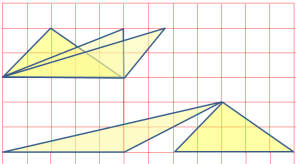The post It Ain’t No Repeated Addition by Devlin launched a math war over the definition of multiplication. Here’s an excerpt from that post:
“Multiplication simply is not repeated addition, and telling young pupils it is inevitably leads to problems when they subsequently learn that it is not. Multiplication of natural numbers certainly gives the same result as repeated addition, but that does not make it the same. Riding my bicycle gets me to my office in about the same time as taking my car, but the two processes are very different. Telling students falsehoods on the assumption that they can be corrected later is rarely a good idea. And telling them that multiplication is repeated addition definitely requires undoing later.”

Multiplication is repeated addition is definitely not correct. Counterexample: 1/2 x 1/4. Try also doing it with integers like -5 x -4 (not that you need two counterexamples to reject a statement). But is it correct to say that in the set of whole numbers multiplication is repeated addition? I think not. You can get the result by repeated addition for this set of number yes, but that does not make repeated addition a definition of multiplication. An operation is not defined by the strategy of getting its result.
But, should teachers in the grades stop telling pupils that multiplication is repeated addition? YES! In fact, they should refrain from telling pupils any rule at all. The pupils are perfectly capable of figuring things like these by themselves given the right task/activity and good facilitation by the teacher.
And let us suppose that students get this conception that multiplication is repeated addition, is there really a problem? Their world revolve around whole numbers so it’s only logical that this will be their understanding of it. Generalizing is a natural human tendency. Something must be wrong if they will not make this connection between multiplication and addition.
What is wrong with “undoing” later? Mathematics is man-made and there’s also a lot of trial and error part in its development. That is why “undoing” and rejection by counterexample are legitimate processes . And, isn’t ‘undoing’ part of teaching? Good teachers are those who can find out or know what they should be ‘undoing’ when they teach mathematics. ‘Multiplication is repeated addition’ is only one of many ‘over-generalizations’ pupils will make that teachers need to carefully undo later. There’s “when you multiply, you make it bigger”, or “the sum of two numbers is always bigger than any of the two you added”, etc. One way to prevent an over-generalization is to offer a counterexample. But where will you get that counterexample when their math still revolves around the world of whole numbers!
As teachers, don’t we all love that part of teaching where we challenge students’ assumptions? I’m not saying that we should deliberately lead pupils to over-generalizations so we have something to undo later. For example, we don’t lead them to “division is repeated subtraction”? Most of the time oversimplifying mathematics is not a good idea.
Click link to know what others say about multiplication is not repeated addition.
Fractal as multiplication model









